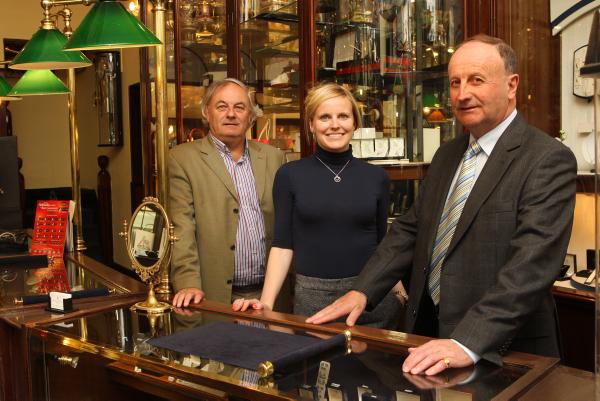He gets a lot of stick,” admits Nicola McDowell, when Irish Country Living asks if her boyfriend feels any pressure since she became the fourth generation to join her family’s jewellery business, better known as The Happy Ring House.
“He’s happier to talk about horses,” she laughs.
Little wonder – established in 1870, McDowell’s on O’Connell St has long been a destination for newly-engaged couples. With its protected neon sign, it’s indisputably a Dublin landmark, having witnessed both the 1916 Rising (Pádraig Pearse bought a pocket watch there) and the fall of Nelson’s Pillar.
Indeed, the tradition was to meet your fiancé-to-be by the pillar, and celebrate afterwards at either the Gresham or Wynne’s hotel. Yet despite its Dublin 1 address, McDowell’s has rural connections, both sides of the counter.
Nicola’s grandfather, Herbert McDowell, trained the racehorse Caughoo, which won the Aintree Grand National in 1947 at 100-1 for his brother Jack, then owner of McDowell’s.
Prior to joining the family business, Nicola, who lives in Slane with bloodstock agent Michael Flanagan, worked for Connolly Red Mills Feed as part of an Enterprise Ireland graduate programme, which included a stint in France.
“I’d never used French in an agricultural or horse context at all, so selling feed to top trainers – the French equivalent of Aidan O’Brien – is a hard enough job,” she says.
“You can be knocked down a lot, so it does make you a tougher person at the end of the day.”
Still, the experience has stood her in good stead since joining her father Peter and her uncle John at McDowell’s. The recession has undoubtedly hit sales, but introducing more contemporary and affordable ranges like Missoma, Chamilia charms, and the Irish-designed Cat & The Moon has helped. Referrals from previous customers are also key, especially in terms of engagement and wedding rings.
Perhaps inspired by Kate Middleton, sapphires and emeralds are the most popular stones, with the trend towards the round, brilliant-cut solitaire set in platinum or white gold. However, higher settings, such as the four claw twist, are making a comeback, as is yellow gold.
Nicola shows Irish Country Living a 1939 catalogue that advertised engagement rings from as little as £2, while spend today tends to average €2,500. Though it’s not unusual for some couples to buy their wedding bands first and splash out later on the engagement ring.
“There was one man who came in,” recalls Peter, “and he said: ‘In 1965, we were emigrating to Australia and you sold us a wedding ring. It was £125 and you gave me the ring for £100 and we really appreciated that because we hardly had the price of it. I’ve done well for myself, so I said whenever I came back here I’d buy my wife a present.’ He never forgot it.” (Second time round, however, he spent €20,000.)
And as McDowell’s are keen to collect more stories behind their engagement rings, they’ve teamed up with Irish Country Living to offer a €250 voucher for the most romantic tale.
And Nicola reckons there should be no shortage of romance. “It’s the one industry where people are happy coming in and leaving,” she concludes. CL














SHARING OPTIONS